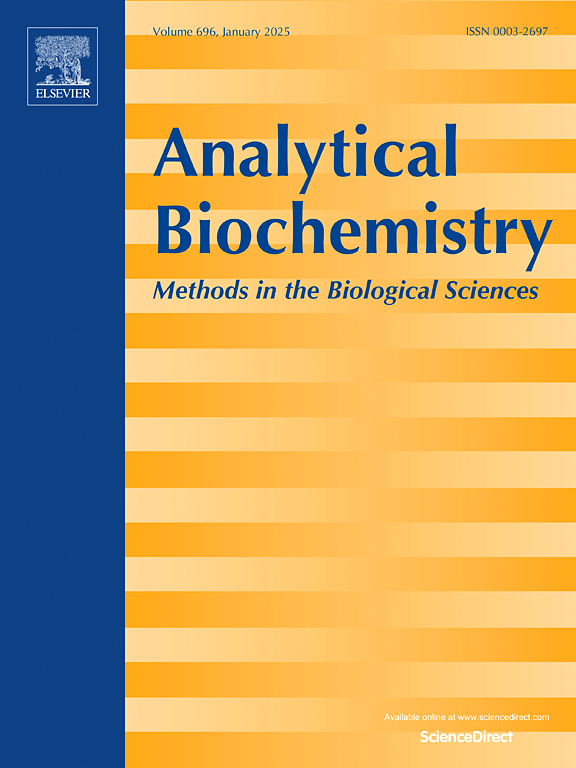四种病毒中和法检测SARS-CoV-2中和抗体的比较评价。
IF 2.5
4区 生物学
Q2 BIOCHEMICAL RESEARCH METHODS
引用次数: 0
摘要
针对 SARS-CoV-2 受体结合域(RBD)或尖峰的中和抗体(NAbs)在阻止病毒进入宿主细胞方面发挥着重要作用,检测其水平对于评估疫苗接种后或 SARS-CoV-2 感染恢复后的体液保护性免疫反应至关重要。在这里,我们比较了四种病毒中和试验在不同样本类型中测量中和抗体的性能。我们使用代病毒中和试验(SVNT)、伪病毒中和试验(PVNT)、传统病毒中和试验(CVNT)和一步或两步抑制流式细胞术病毒中和试验(IFVNT)分析了 25 份使用不同疫苗平台免疫的小鼠或家兔血清样本和 11 份小鼠抗 RBD 单克隆抗体(MAbs)。所有四种病毒中和检测方法都显示出明显的相关性,但 PVNT 和 CVNT 的检测限(LoD)明显低于其他两种检测方法。总之,我们的研究结果表明,所有四种 VNT 检测方法都能得出有效而准确的结果,可用于确定 SARS-CoV-2 中和单克隆抗体和多克隆抗体的水平。本文章由计算机程序翻译,如有差异,请以英文原文为准。

Comparative assessment of four virus neutralization assays for detection of SARS-CoV-2 neutralizing antibodies
Neutralizing antibodies (NAbs) targeting receptor-binding domain (RBD) or spike of SARS-CoV-2 play an important role in blocking virus entry to the host cells and detecting their levels is critical for the assessment of humoral protective immune response following vaccination or recovery from SARS-CoV-2 infection. Here, we compared the performance of four virus neutralization tests to measure neutralizing antibodies in various sample types. We analyzed 25 serum samples obtained from mice or rabbits immunized with different vaccine platforms, and also 11 mouse anti-RBD monoclonal antibodies (MAbs) using surrogate virus neutralization test (SVNT), pseudovirus neutralization test (PVNT), conventional virus neutralization test (CVNT), and one-step or two-step inhibition flowcytometry virus neutralization test (IFVNT). All four VNTs showed significant correlations with each other, though PVNT and CVNT displayed significantly lower limit of detection (LoD) compared to the other two assays. In conclusion, our findings indicate that all four VNT assays give valid and accurate results and could be employed to determine the level of SARS-CoV-2 neutralizing monoclonal and polyclonal antibodies.
求助全文
通过发布文献求助,成功后即可免费获取论文全文。
去求助
来源期刊

Analytical biochemistry
生物-分析化学
CiteScore
5.70
自引率
0.00%
发文量
283
审稿时长
44 days
期刊介绍:
The journal''s title Analytical Biochemistry: Methods in the Biological Sciences declares its broad scope: methods for the basic biological sciences that include biochemistry, molecular genetics, cell biology, proteomics, immunology, bioinformatics and wherever the frontiers of research take the field.
The emphasis is on methods from the strictly analytical to the more preparative that would include novel approaches to protein purification as well as improvements in cell and organ culture. The actual techniques are equally inclusive ranging from aptamers to zymology.
The journal has been particularly active in:
-Analytical techniques for biological molecules-
Aptamer selection and utilization-
Biosensors-
Chromatography-
Cloning, sequencing and mutagenesis-
Electrochemical methods-
Electrophoresis-
Enzyme characterization methods-
Immunological approaches-
Mass spectrometry of proteins and nucleic acids-
Metabolomics-
Nano level techniques-
Optical spectroscopy in all its forms.
The journal is reluctant to include most drug and strictly clinical studies as there are more suitable publication platforms for these types of papers.
 求助内容:
求助内容: 应助结果提醒方式:
应助结果提醒方式:


